What is a Mold Flipper? Understand Its Working Principle & 5 Core Advantages
Handling large, heavy molds in a busy factory environment presents a constant challenge. You might be using overhead cranes and chains, a method that feels familiar but is slow and fraught with risk. A single moment of imbalance or a slipped chain can lead to a catastrophic failure, damaging a priceless mold, halting your production line for days, and worse, severely injuring a team member. This is a scenario that keeps conscientious owners and managers like you awake at night. But there is a modern, engineered solution designed specifically to eliminate these risks and inefficiencies. It’s time to look at a better way to handle your valuable molds.
A mold flipper, also known as a mold upender or turnover machine, is a piece of industrial equipment designed to safely and efficiently rotate heavy objects like molds, dies, or coils by 90 or 180 degrees. It uses a robust mechanical or hydraulic system to securely clamp the mold and then perform a smooth, controlled turn, allowing for easy access for maintenance, cleaning, or repositioning.
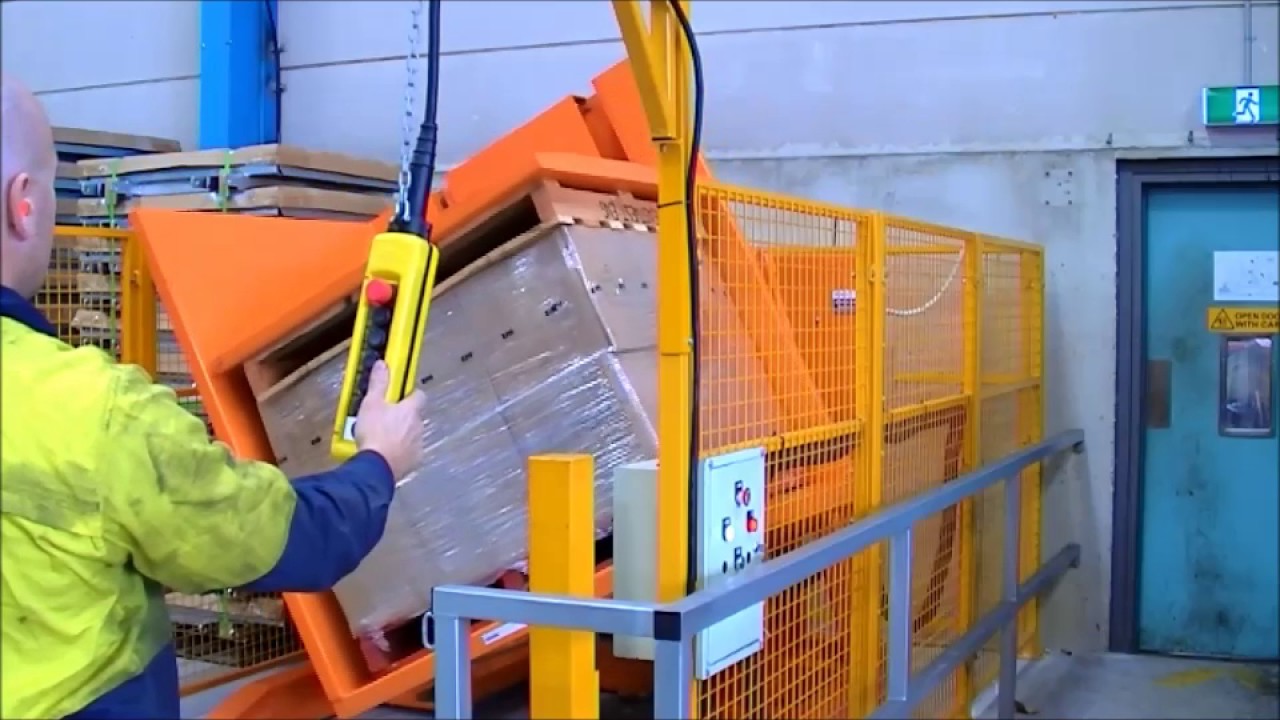
I've spent my entire career in and around packing machinery, from my first days on the factory floor to building my own company, SHJLPACK. I’ve seen firsthand the difference that the right equipment makes. It's not just about speed; it's about safety, reliability, and protecting your investments. A mold flipper is one of those machines that seems simple, but its impact on an operation is profound. Let's dive deeper into how this equipment works and the core advantages it can bring to your plant.
How Does a Mold Flipper Actually Work?
You see this large piece of equipment in a catalog or on a factory floor, and it looks impressive. But you might wonder what’s happening inside. How does it manage to turn a multi-ton block of steel so effortlessly and safely? If you can't trust the mechanics, you can't trust the machine with your expensive molds and the safety of your people. Understanding the core working principle is the first step to building that trust. Let’s break down the simple, powerful engineering behind it.
A mold flipper works through a straightforward sequence: the mold is placed on the machine's table, powerful clamps secure it in place, a drive system (either hydraulic or electric) rotates the table to the desired angle (typically 90 degrees), and then the clamps release the mold in its new orientation. The entire process is controlled by a single operator from a safe distance.
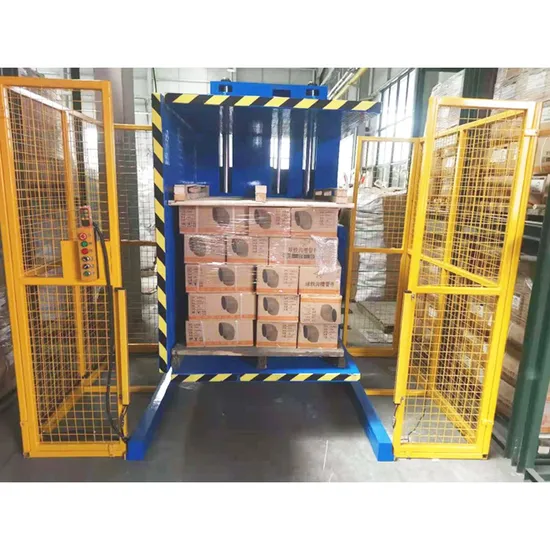
The beauty of a well-designed mold flipper is in its robust simplicity. It's not overly complicated, which is key to reliability in a demanding industrial environment like a steel mill. From my experience as an engineer, the most dependable machines are often the ones that do one job and do it exceptionally well. The mold flipper is a perfect example of this philosophy.
The Core Components and Process
At its heart, the machine is built around a few key systems that work together to ensure a safe and smooth rotation. Let's look at them individually.
- The Frame and Tables: The foundation of the machine is a heavy-duty, welded steel frame. It has to be incredibly rigid to handle the immense weight and forces during rotation without flexing. The machine has two tables, or platforms, typically arranged in an 'L' shape. The mold is loaded onto one table, and after the rotation, it rests against the other.
- The Clamping System: This is a critical safety feature. Once the mold is on the table, powerful clamps, often hydraulically or mechanically activated, press against it. These clamps are lined with durable materials like polyurethane to grip the mold firmly without scratching or denting its surface. This is a huge improvement over chains, which can easily damage a mold's finish.
- The Drive System: This is the engine of the machine. It provides the power to turn the table. You generally have two options here, and the choice depends on your specific needs for power, precision, and maintenance.
Comparing Drive Systems: Hydraulic vs. Electric
For a leader like Javier Morales, who has a background in mechanical engineering and a sharp eye on operational costs, choosing the right drive system is a key decision. It impacts everything from upfront cost to long-term maintenance.
| Feature | Hydraulic Drive System | Electric Motor with Gear Reducer |
|---|---|---|
| Power | Excellent for very heavy loads (>50 tons). Delivers high torque smoothly. | Very efficient for light to heavy loads (up to 50-60 tons). |
| Control | Good speed control, but can be less precise in stopping. | Excellent precision control with VFD (Variable Frequency Drive). |
| Maintenance | Requires regular checks for leaks, filter changes, and oil levels. | Simpler maintenance, mainly focused on gearbox and motor lubrication. |
| Energy Cost | Hydraulic pump runs often, potentially consuming more energy. | Consumes energy only during the rotation cycle, generally more efficient. |
| Environment | Risk of oil leaks, which can be a housekeeping and environmental concern. | Cleaner operation with no risk of hydraulic fluid spills. |
In my own factory, we've built both types. For extremely heavy applications, hydraulics are often the go-to. However, for most mold handling needs, the modern electric drive systems are becoming the standard. They are cleaner, more energy-efficient, and integrate better with the kind of digital control systems that forward-thinking plants are deploying.
How Can a Mold Flipper Drastically Improve Worker Safety?
In any heavy industrial setting, worker safety is priority number one. I remember in my early days, we used to flip large components with two overhead cranes. It was a tense, carefully choreographed procedure that required several skilled riggers. Everyone held their breath until the load was safely down. The potential for something to go wrong was immense. This is the exact situation you face when flipping heavy molds manually. You're relying on chains, slings, and human coordination, where a single weak link can lead to disaster.
A mold flipper improves worker safety by creating a controlled, stable, and predictable process. It eliminates manual handling and the use of unstable crane-and-chain methods. The operator stands at a safe distance, managing the entire process with the push of a button, completely removed from the crush zone.
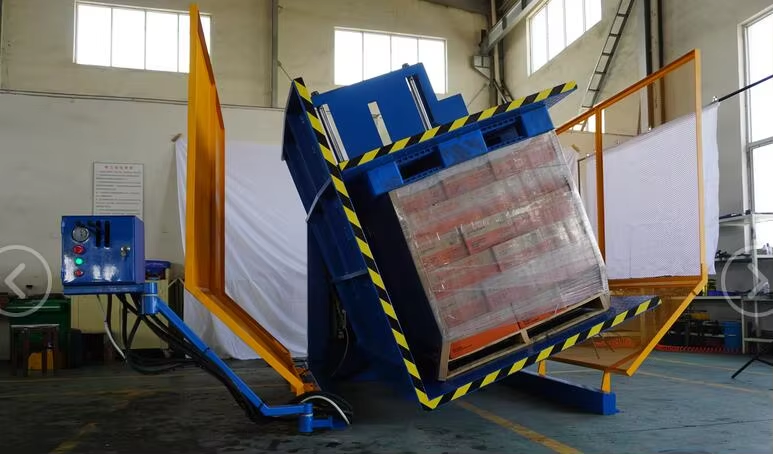
Replacing a high-risk manual task with a low-risk automated one is one of the most effective safety investments a plant can make. It’s not just about meeting regulations; it’s about creating a culture where your team feels valued and protected. When people feel safe, they are more focused and productive. Let’s explore the specific ways a mold flipper transforms safety in your facility.
From High-Risk to Low-Risk
The traditional method of flipping a mold is filled with hazards. Let's be direct about what those are and how a dedicated machine mitigates them.
- Eliminating Falling Loads: With cranes and chains, the biggest fear is a load shifting or a sling failing. The center of gravity changes during the flip, creating a highly unstable situation. A mold flipper secures the mold to a table before the rotation even begins. The object is positively held throughout the entire motion. It cannot fall.
- Preventing Crushing Injuries: Manual flipping requires workers to be in close proximity to the mold, guiding it with their hands or taglines. If the load swings or drops, they are in immediate danger. A mold flipper creates a clear exclusion zone. The operator is at a control podium, often located several meters away.
- Reducing Strain and Ergonomic Injuries: Even if a major accident doesn't happen, the manual labor involved in rigging heavy chains and positioning molds takes a physical toll on your team, leading to back strains and other cumulative injuries. A mold flipper requires only a forklift or crane to place the mold on the machine, and then the machine does all the heavy work.
Built-in Safety Features of a Modern Mold Flipper
A good supplier doesn't just sell a machine; they sell a safety solution. This means incorporating multiple layers of protection. When you evaluate a mold flipper, you should look for these features. They are non-negotiable from an engineering and safety perspective.
| Safety Feature | How It Protects Your Team |
|---|---|
| Interlocking Clamps | The rotation sequence cannot begin until the clamps have confirmed the mold is secure. |
| Emergency Stop Buttons | Placed on the machine and the remote console for immediate shutdown from any position. |
| Safety Fencing/Light Curtains | Creates a physical barrier or an invisible light field that automatically stops the machine if a person enters the operating area. |
| Overload Protection | The system will prevent operation if the mold exceeds the machine's rated capacity, protecting both the machine and personnel. |
| Audible and Visual Alarms | A horn and flashing light activate during rotation to alert everyone in the vicinity that the machine is in motion. |
Investing in a mold flipper is a direct investment in your people's well-being. It sends a clear message that you are a forward-thinking leader who prioritizes safety over outdated, risky procedures. For a plant facing pressures from aging equipment, upgrading a process like this is a powerful way to reduce the rising risk of accidents.
Can a Mold Flipper Really Boost Your Production Efficiency?
Your goal is to get your plant's effective run time up to 95%. That's an ambitious and admirable target. But it's impossible to reach if your changeover and maintenance processes are slow and unpredictable. Every hour a machine is down for a mold change or repair is an hour you are not producing steel and not generating revenue. You're stuck paying for labor and overhead while your assets sit idle. This lost time, or downtime, is a primary enemy of efficiency and profitability.
A mold flipper dramatically boosts production efficiency by cutting the time required to turn a mold from hours to mere minutes. What previously took a team of riggers 60-90 minutes with a crane can now be done by a single operator in less than 10 minutes, significantly increasing machine uptime.
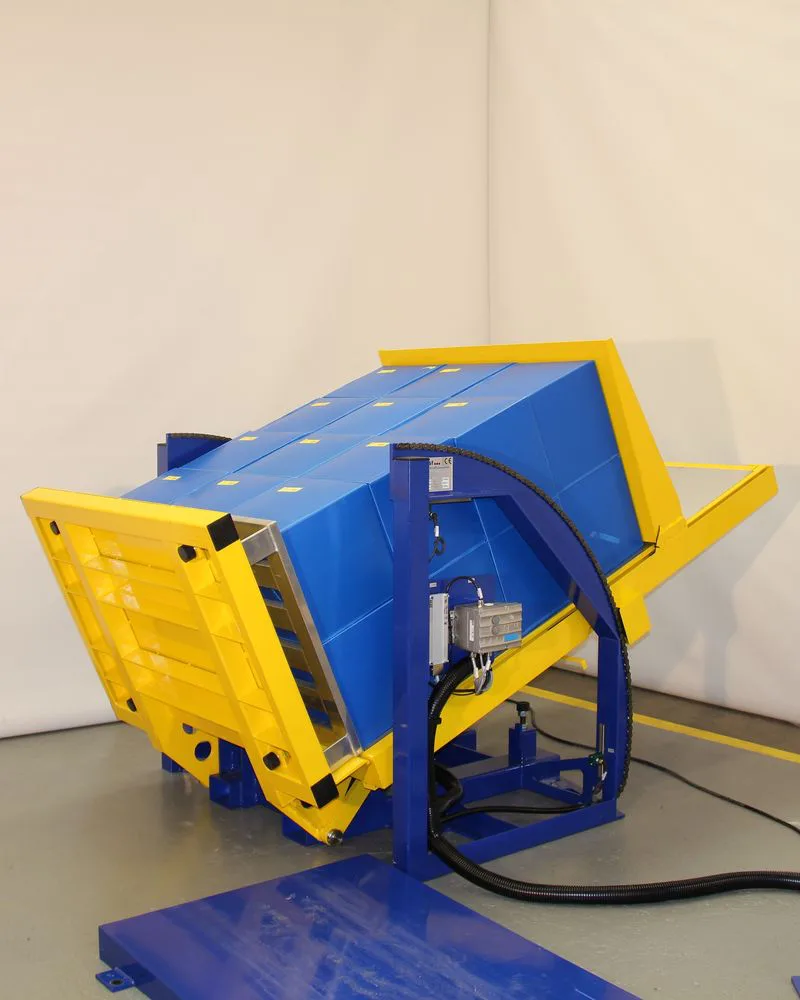
I've seen this transformation in countless factories. The ripple effect of faster mold handling is huge. It doesn’t just make one task faster; it makes the entire production schedule more agile and predictable. It supports the kind of smart scheduling and predictive maintenance you aim to implement. Let's quantify this impact.
A Time Study: Manual vs. Mold Flipper
Imagine a typical mold change. Your team needs to open up the mold for cleaning and minor repairs before putting it into the press. Let's compare the steps and time involved.
| Task | Manual Crane Method | Mold Flipper Method |
|---|---|---|
| Preparation | Find and inspect chains/slings, clear a large area, assemble a 3-person rigging crew. | Forklift driver brings mold to the flipper. 1 operator is present. |
| Time | 20-30 minutes | 5 minutes |
| The Flip | Carefully rig the mold, perform a slow, two-crane lift and turn, reposition. High stress. | Place mold on table, press "clamp," press "rotate." Low stress. |
| Time | 30-45 minutes | 2 minutes |
| Post-Flip | Un-rig the chains, move the mold to the maintenance area. | Forklift picks up the mold and moves it to the maintenance area. |
| Time | 10-15 minutes | 3 minutes |
| Total Time | 60-90 minutes | ~10 minutes |
| Labor | 3-4 people | 1 operator |
The numbers speak for themselves. You save over an hour of direct downtime and free up two or three skilled workers to perform other valuable tasks. If you perform just one mold change per day, that's over 300 hours of saved downtime per year. For a 2-million-ton-per-year plant, the value of that recovered production time is substantial. It's a clear and direct path toward your 95% uptime goal.
The Broader Impact on Operations
The benefits go beyond just one task.
- Predictable Scheduling: When a mold flip takes 10 minutes every time, you can schedule your production runs with much greater accuracy. This is essential for the kind of smart scheduling platform Javier has already implemented. The mold flipper provides reliable data for your MES.
- Enabling Predictive Maintenance: Faster handling means maintenance becomes less of a disruption. It's easier for your team to perform quick inspections and cleanings on a regular basis, rather than waiting for a major scheduled shutdown. This proactive approach prevents bigger, more costly failures down the line.
- Increased Agility: In a market with fluctuating demand, you need to be able to switch production quickly. A mold flipper allows you to change over your lines faster, making your entire operation more responsive to customer orders.
In What Ways Does a Mold Flipper Protect Your Valuable Molds?
Your molds are not just pieces of steel; they are high-precision assets that represent a massive capital investment. The quality of your final product is directly dependent on the integrity of these molds. Yet, the very process of moving them for maintenance—using chains, pry bars, and cranes—is often the biggest source of damage. A small nick from a chain or a dent from being set down too hard can translate into thousands of dollars in repairs and hours of lost production. It's a frustrating and costly cycle.
A mold flipper protects your molds by handling them with firm but gentle pressure and performing a perfectly smooth rotation. It uses wide, flat clamping surfaces with protective padding to distribute force evenly, eliminating the point-loading, scratches, and impact damage associated with chains and slings.
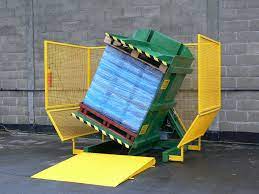
When I started my factory, I learned a hard lesson about protecting assets. A damaged tool can cost you more in downtime and rework than the tool itself is worth. This is especially true for molds. A mold flipper is like insurance for your molds. It is purpose-built to handle them the way they should be handled—with precision and care.
The Mechanics of Mold Protection
Let’s get into the specifics of how the design of a flipper prevents the most common types of handling damage. It's a combination of smart engineering and the right materials.
- Eliminating Point Loading: When you lift a heavy mold with a chain or sling, all of that weight is concentrated on a few small points. This creates immense pressure that can easily dent or deform the mold's surface or edges. A mold flipper’s tables and clamps are wide and flat. They support and secure the mold across a large surface area, distributing the force and preventing any single point from being over-stressed.
- Preventing Surface Damage: The clamps on a quality mold flipper are faced with thick polyurethane pads. This material is strong enough to hold the mold securely but soft enough that it won't scratch, mar, or dent the precision surfaces. Chains, on the other hand, are notorious for leaving deep gouges that require expensive and time-consuming polishing and repair.
- Controlled, Smooth Motion: A crane lift can be jerky. The start and stop of the hoist and trolley can impart shock loads into the mold. A drop of just a few inches can cause serious damage. The drive system of a mold flipper is designed for a slow, fluid rotation. It accelerates and decelerates smoothly, ensuring there are no sudden impacts or jarring motions.
The Financial Case for Protecting Your Molds
For a pragmatic owner like Javier, every investment must have a clear ROI. The ROI of preventing mold damage is one of the easiest to calculate.
| Damage Scenario (Manual Handling) | Cost Consequence | How a Mold Flipper Prevents It |
|---|---|---|
| Edge Dent from Chain | Requires welding, grinding, and re-machining. Cost: $2,000 - $5,000 + Downtime. | Wide, padded clamps apply no pressure to critical edges. |
| Surface Scratch from Sling | Requires extensive hand polishing to ensure product quality. Cost: $1,000 - $3,000 + Labor. | Polyurethane pads provide a non-marring contact surface. |
| Dropped Mold (Catastrophic) | Mold may be damaged beyond repair. Cost: $50,000 - $250,000+ for replacement. | The mold is securely clamped to the machine table; it cannot be dropped. |
Preventing just one moderate damage incident per year can often justify the entire cost of the mold flipper. It’s a proactive investment in quality control and asset preservation, ensuring your plant can consistently produce high-quality steel products without unexpected interruptions.
My Insight: A Mold Flipper is More Than Just a Machine
Javier, I've read about your journey, and it reminds me a lot of my own. We both started with a deep understanding of the engineering on the factory floor and grew that knowledge into building a business. We know that success isn't just about big strategies; it's about making smart, practical decisions on the ground that add up over time. We know the pressure of managing costs, the challenge of aging equipment, and the constant drive for better efficiency.
When you look at a piece of equipment like a mold flipper, I encourage you not to see it as just a machine that turns things over. See it as a strategic tool that directly addresses your biggest challenges and goals.
You are pushing for a digital transformation with MES and IoT. A modern mold flipper isn't an isolated piece of metal. It can be integrated. Its control system can log every cycle, providing data on which molds are being used and how often they are being maintained. This data feeds directly into your predictive maintenance programs. It tells you when a mold is due for inspection before it fails, helping you achieve that 95% uptime. It's a data-point generator that makes your entire system smarter.
You face increasing pressure on energy costs and environmental compliance. A mold flipper, especially an electric model, is an energy-efficient solution. But more importantly, it helps prevent the waste associated with damaged products and inefficient processes. A safer plant is also a plant that avoids the costly and disruptive consequences of environmental or safety incidents.
You are looking for a strategic partner, not just a supplier. I built SHJLPACK on that very principle. A partner understands your business. They know that for a 2-million-ton steel mill, reliability isn't a feature; it's a requirement. A partner provides the total solution—from helping you select the right machine configuration, to supporting installation, to being there for maintenance advice down the road. They offer insights, not just invoices.
Investing in a mold flipper is a decisive step toward a safer, more efficient, and more profitable operation. It’s an investment in stability. It’s a tool that helps you control costs, protect your assets, and empower your people. It's the kind of practical, high-return investment that a smart, forward-thinking leader like you builds a successful company on.
Conclusion
A mold flipper is an essential tool for modern manufacturing. It enhances safety, boosts efficiency, and protects valuable assets, providing a clear and rapid return on investment for any facility.




